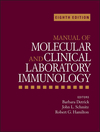Histocompatibility and Immunogenetics Testing in the 21st Century
Abstract
The scope of immunogenetics and histocompatibility testing in transplantation has changed dramatically over the past 50 years. In organ transplantation, outcomes continue to improve as a result of better immunogenetics testing, immune suppression, and patient management; however, acute rejection and chronic rejection remain the biggest obstacles for successful transplantation. Since “crossmatching” was first described by Patel and Terasaki (1), the goal to provide accurate immunological risk assessment for transplant recipients remains unchanged. Histocompatibility and immunogenetics laboratories utilize multiple diagnostic assays to evaluate HLA compatibility between donors and recipients. Furthermore, testing has expanded to include immunogenetics systems other than those using HLA, such as killer immunoglobulin-like receptors (KIR) (2, 3), major histocompatibility complex (MHC) class I chain-related gene A (MICA) (4), angiotensin type 1 receptor (AT1R) (5), and genes encoding cytokines. The application of new state-of-the-art diagnostic tests that inform on the immune status of the transplant recipient has transformed the role of the immunogenetics laboratory from providing tissue-typing and crossmatching services to assessing immunologic risk, donor selection, and presentation of strategies for desensitization and therapeutic intervention. In addition, immunological risk assessment is no longer limited to the pretransplant period but has become increasingly recognized as a noninvasive tool for assessing acute and chronic rejection (6–8).



